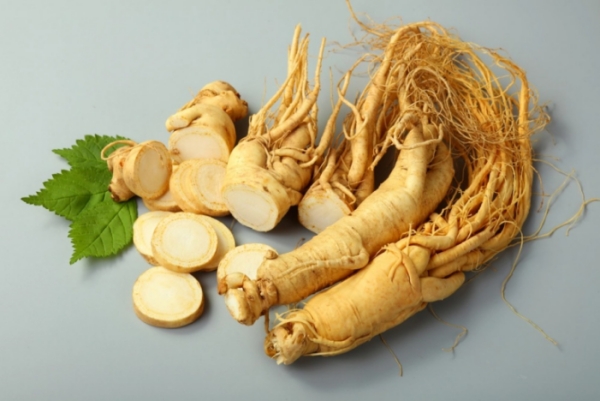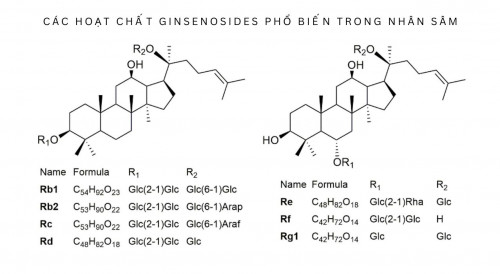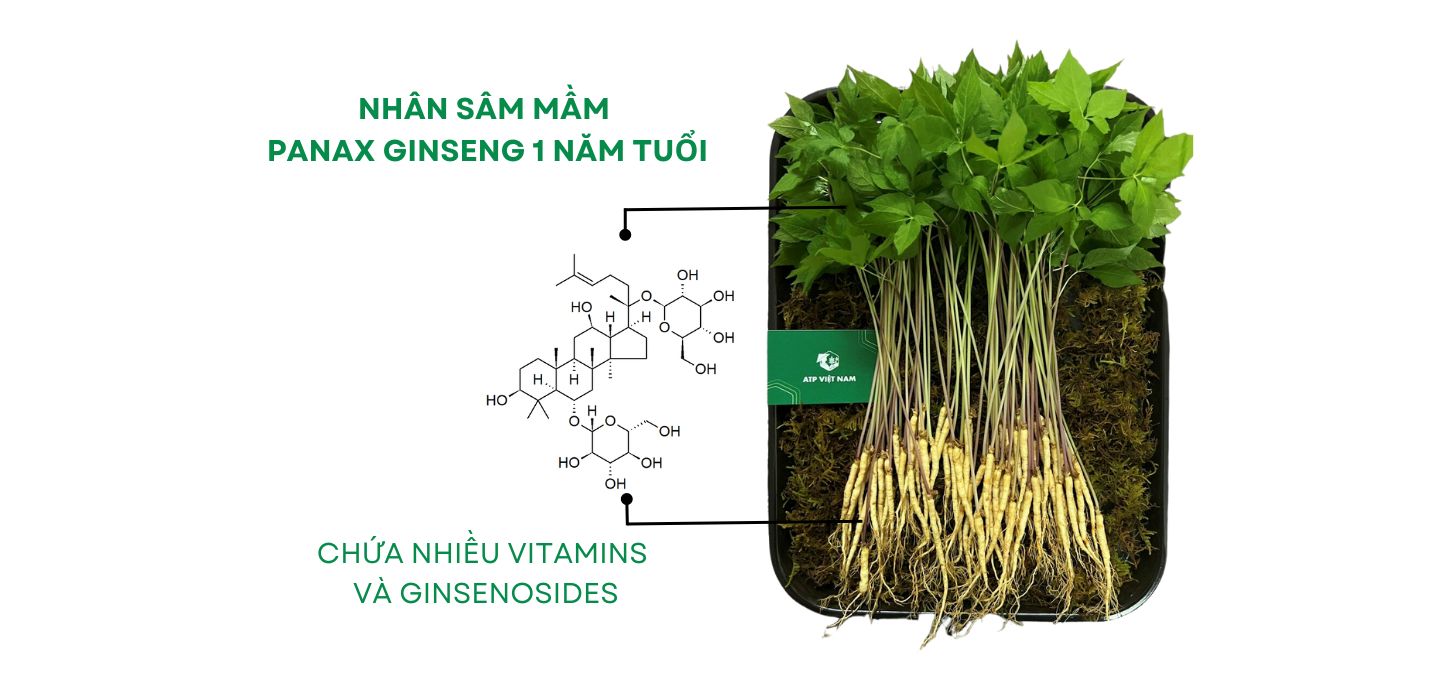(Summary of scientific research by Jae Joon Wee, Park Kyeong Mee and An-Sik Chung, published in the National Library of Medicine - NIH - USA)
Ginseng is a medicinal plant widely used to treat various conditions. The pharmacological effects of ginseng have been demonstrated for cancer, diabetes, and cardiovascular disease and have been used to promote immune function, central nervous system (CNS) function, and stress relief. and for antioxidant activities (Jung and Jin 1996 ) . The root of Panax CA Meyer ginseng , also known as Korean ginseng or Asian ginseng, is a precious and important folk medicine in East Asian countries, including China, Korea and Japan, for over 2000 years. Panax is derived from the word "panacea", which means a cure for all diseases and a source of longevity as well as physical strength and resistance. As the use of traditional Chinese herbs for medicinal and dietary purposes becomes more and more popular in Western countries, sales of P. ginseng are increasing in North America and Europe as well. as in other parts of the world.
The main bioactive components of P. ginseng are ginsenosides, a group of saponins with a triterpenoid dammarane structure ( Huang 1999 ). Nearly 50 ginsenosides have been isolated from the roots of P. ginseng (white and red ginseng), and new structures continue to be identified, especially from Panax quinquefolius (American ginseng) and Panax japonica (Japanese ginseng). as well as their berries ( Gillis 1997 ; Yoshikawa et al 1998 ; Attele et al 2002 ; Christensen 2009 )
Properties and structure of Ginseng
Ginsenosides, known as ginseng saponins, are the main constituents of ginseng and are classified into two main groups according to their aglycone type, namely protopanaxadiol (PPD) and protopanaxatriol (PPT).
The structural diversity of ginsenosides may contribute to the many pharmacological effects of ginseng on cancer, diabetes, inflammation, stress, immunity, cardiovascular system, and CNS. Furthermore, it is of interest that the coexistence of PPD and PPT-type ginsenosides in ginseng may be related to its dual effects that can both stimulate and calm the central nervous system.
Ginseng contains several valuable nonsaponin components, including essential oils, antioxidants, polyacetylenic alcohols, peptides, amino acids, polysaccharides, and vitamins. Ginseng polysaccharides are also the target of chemical and biological research, because plant polysaccharides often show anti-cancer effects through modulation of innate immunity.
Immune Regulatory Functions of Ginseng
There have been many reports describing the immunomodulatory effects of ginseng, although the results are controversial and inconsistent, because of the chemical composition of the purified parts of ginseng used in the studies. is different. Recently, it has been reported that ginsenoside-based nanoparticles (ginsomes) act as a novel adjuvant and up-regulator of Th1 and Th2 immune responses in imprinted control region (ICR) mice. Thus, ginseng as an adjuvant is thought to modulate both Th1 and Th2 immune responses ( Song, Zang, and Hu 2009 ).
Various aspects of the immunomodulatory effects of ginseng have been studied for their tonic effects. Modulation of cytokine production, enhancement of humoral immune response, enhancement of CD4(+) T cell activity, upregulation of adjuvant effects, restoration of T-lymphocyte function and survival of BMC after inhibition by irradiation is particularly remarkable.
Anti-Cancer Function of Ginseng
The protective effect and additional therapeutic potential of ginseng in cancer treatment have been demonstrated through extensive epidemiological, preclinical and laboratory studies. Two Korean cohort studies have suggested that people who consume ginseng are associated with a 60-70% reduction in the risk of stomach cancer. However, ginseng consumers in the Shanghai cohort study of women showed no beneficial effect on gastric cancer risk ( Kamangar et al. 2007 ). Further careful evaluation in Asian cohort studies may help clarify the effects of ginseng on gastric carcinogenesis and other cancers. Additional clinical studies are needed to evaluate the potential beneficial effects of ginseng on chemoprevention and adjuvant therapy for cancer.
Lowers blood sugar and enhances diabetes treatment
There are numerous reports on the improvement of diabetes status of ginseng root in both human and animal studies. In animal studies, orally administered ginseng root was able to counteract the insulin resistance effects induced by high fructose intake in rats after 4 weeks, reduce glucose levels, and inhibit insulin resistance (Liu , Liu and Cheng 2005 ). Ethanol extract of wild ginseng root prevents weight gain and fasting hyperglycemia, triglycerides, and high free fatty acid levels in a rat model of high fat-induced hyperglycemia (Yun et al. 2004). ) . Ginsenoside Re lowers blood sugar, cholesterol and triglyceride levels as well as reduces oxidative stress in the eyes and kidneys of diabetic rats ( Cho et al. 2006 ). It has been suggested that ginseng is useful in preventing diabetes in healthy individuals and improving glycemic control in type 2 diabetics (Luo and Luo 2008 ).
Functions for the central nervous system
Various models of memory impairment have been used to evaluate the effects of ginseng and its active ingredients on learning and memory. In the passive avoidance test, ginsenoside Rg1 improved memory acquisition, consolidation and retrieval, and learning, suggesting that Rg1 can improve all stages of memory (Zhang et al. 1990) . ).
Among the mechanisms that positively impact brain aging related to cognitive function and memory decline, ginsenosides may enhance the cholinergic system in the CNS. ACH is a very important neurotransmitter in the brain, and its scarcity often leads to impaired learning and memory. Ginsenosides Rg1 and Rb1 have been found to enhance the functions of the cholinergic system by increasing the density of central M-cholinergic receptors and increasing ACH levels in the CNS (Zhang et al. 1988 ) . Glutamate, another neurotransmitter, is also important for learning, memory, and cognitive function.
To summarize this section, ginsenosides Rg1, Rb1, Rg3 and Rh2 have been shown to be effective in enhancing learning and memory acquisition, enhancing ACH and glutamate release, and inhibiting apoptosis. program and protect neurons from neurotoxins. Ginsenosides Rg3 and Rh2 are particularly effective in protecting the CNS, preventing neurodegenerative diseases, and may also be useful in the treatment of Alzheimer's disease.
Source: https://www.ncbi.nlm.nih.gov/books/NBK92776/
 31/07/2023
7 Lợi ích sức khỏe mạnh mẽ của Nhân sâm
31/07/2023
7 Lợi ích sức khỏe mạnh mẽ của Nhân sâm









